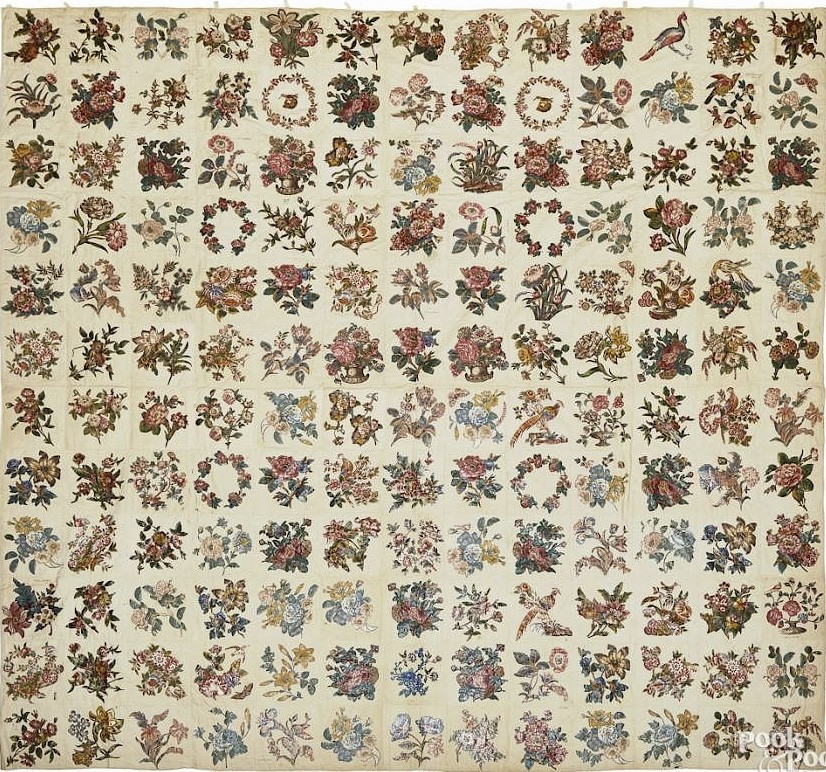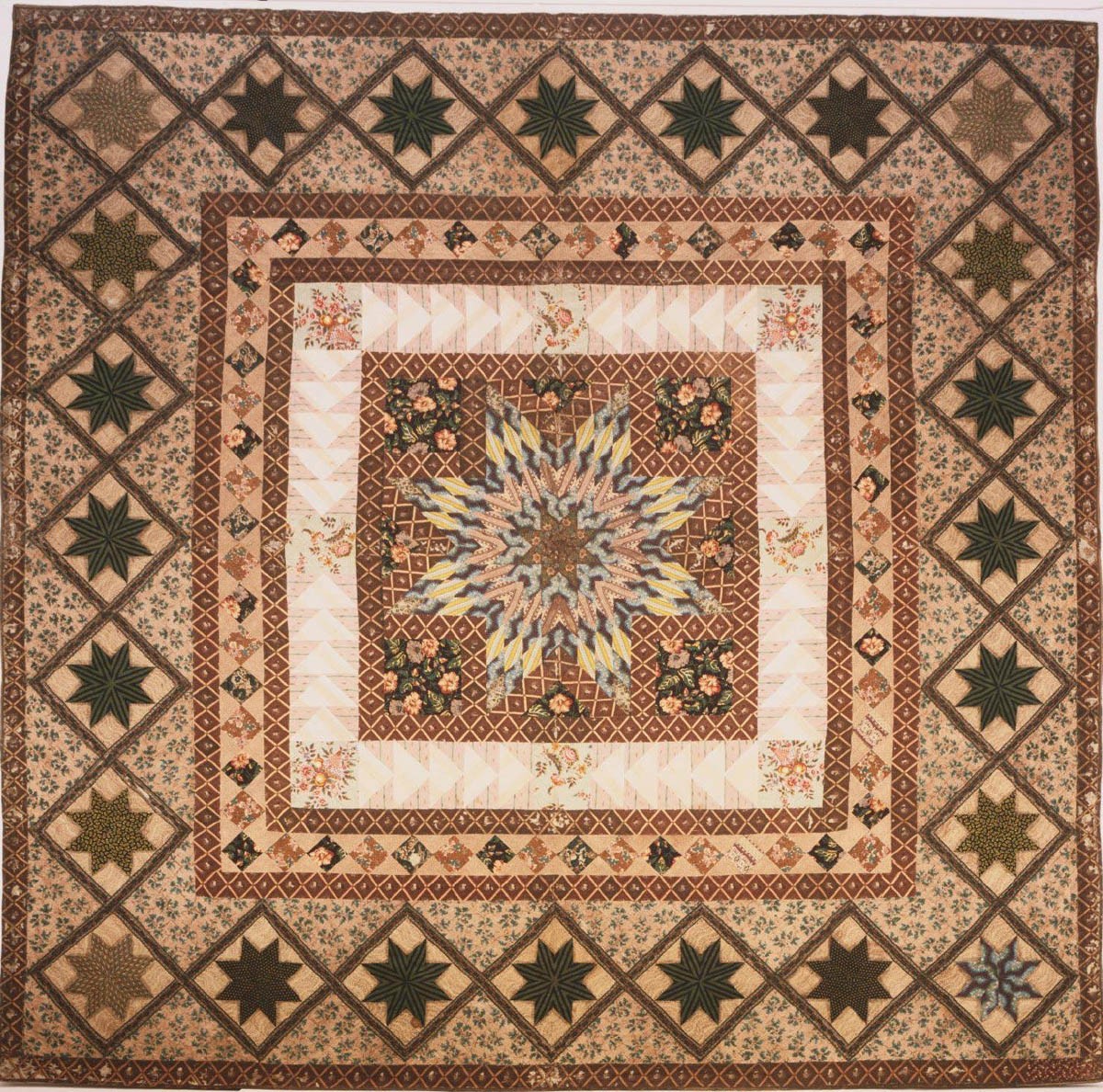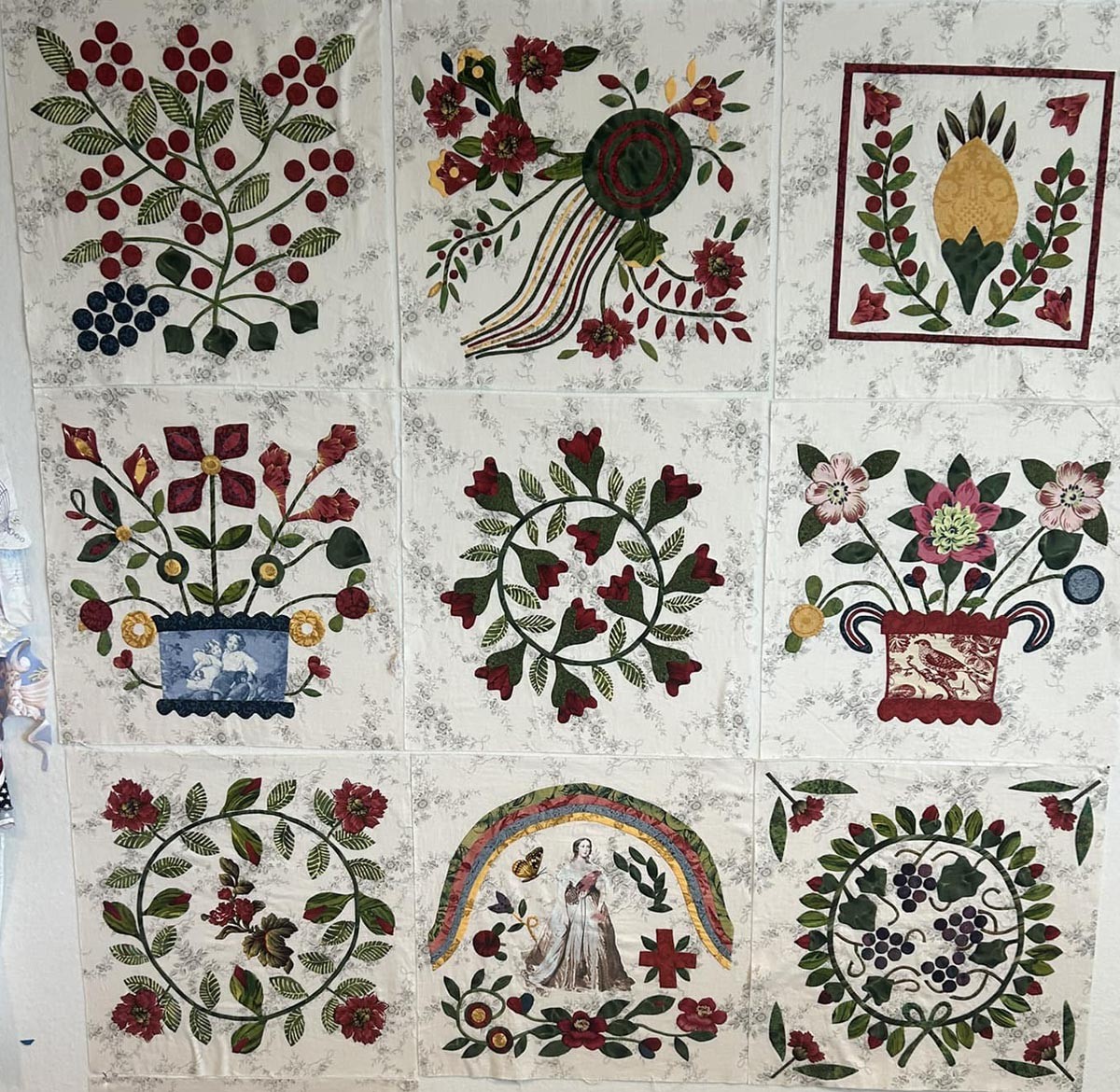
As I was researching the chinoiserie panel, I saw several borders used in different quilts, which got me wondering about borders. Naturally, I then had to research border fabric that has obviously been around for some time. Also, I was surprised to see borders printed both horizontally and vertically which is convenient depending on the fabrics intended use. Border fabric was printed to be used for petticoats, with one border printed horizontally to provide a finish to the petticoat. A simpler print was used on the remainder of the fabric, which would make for easier block printing. It also allowed for one seam to be added to create the tube and as an early form of ready to wear, kept in stock. Once the petticoat was selected it could simply be fitted at the waist. Some...





